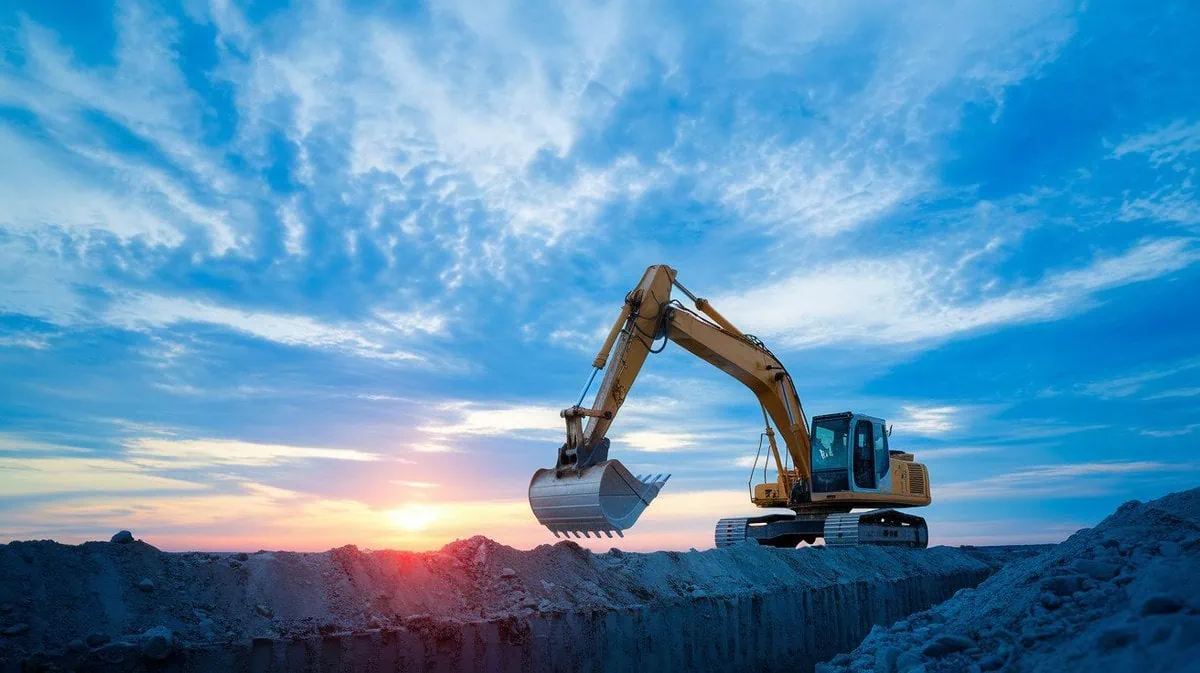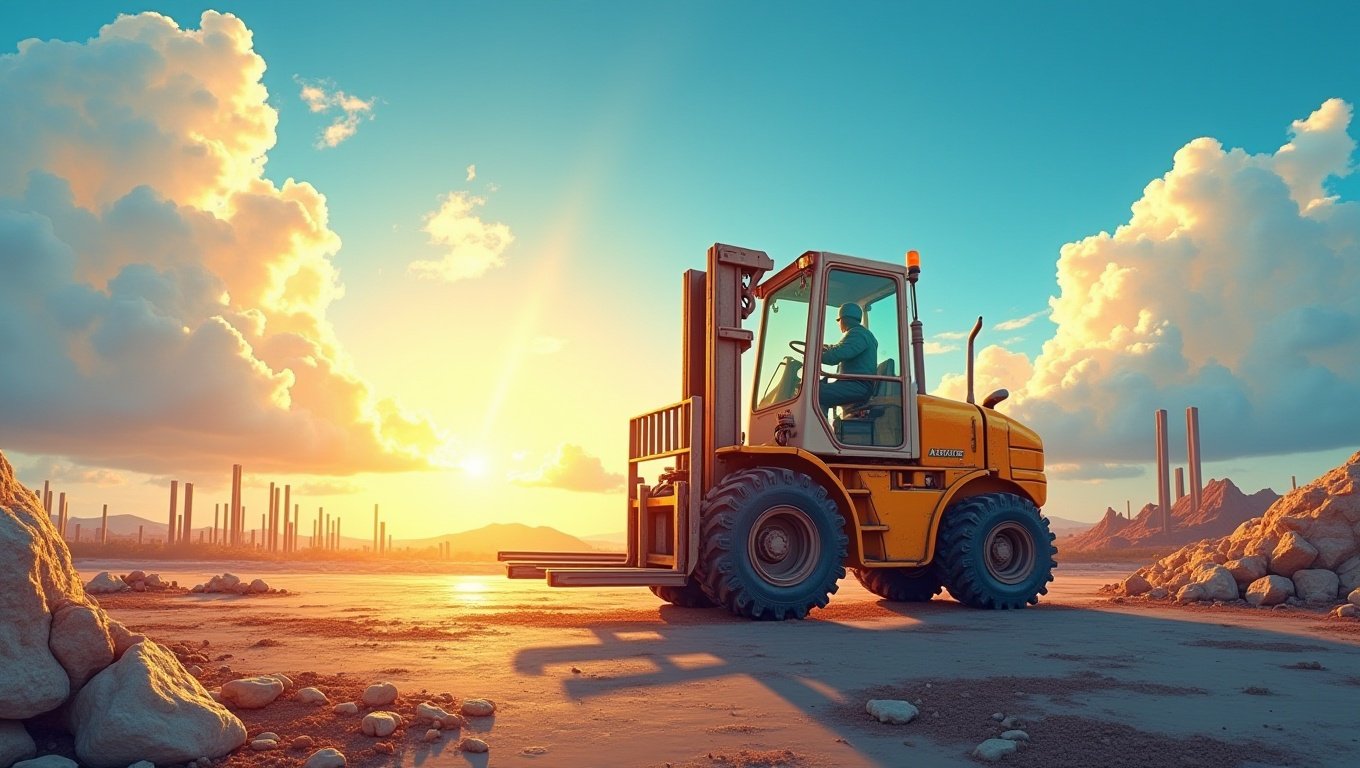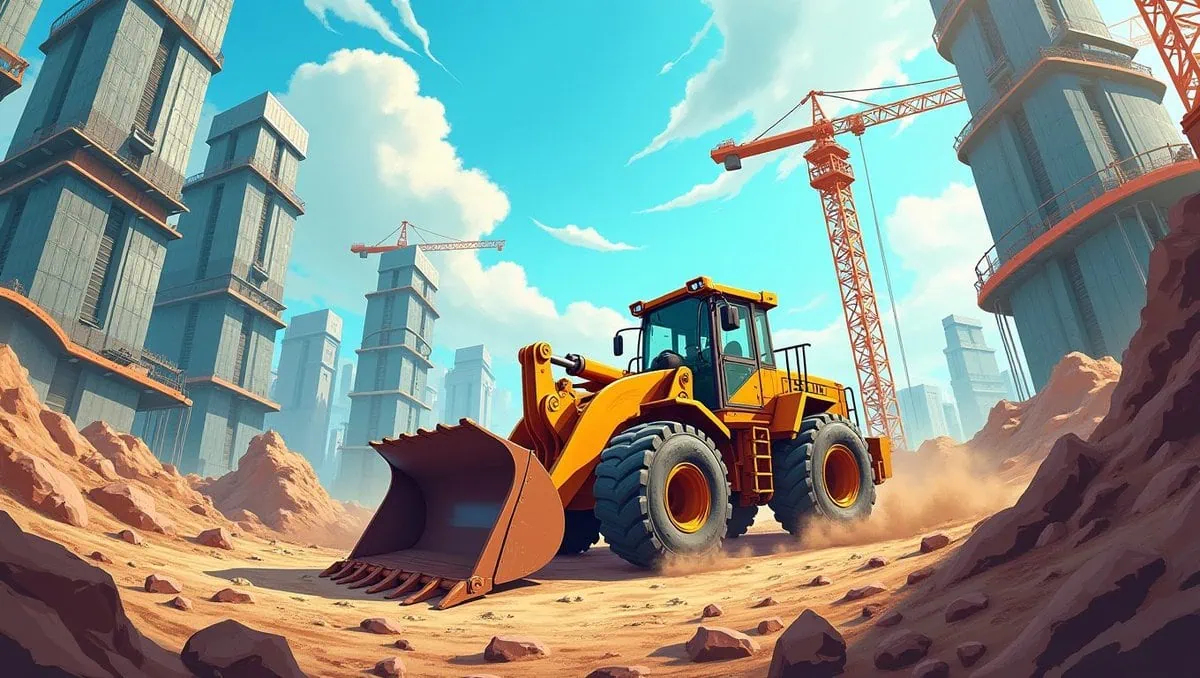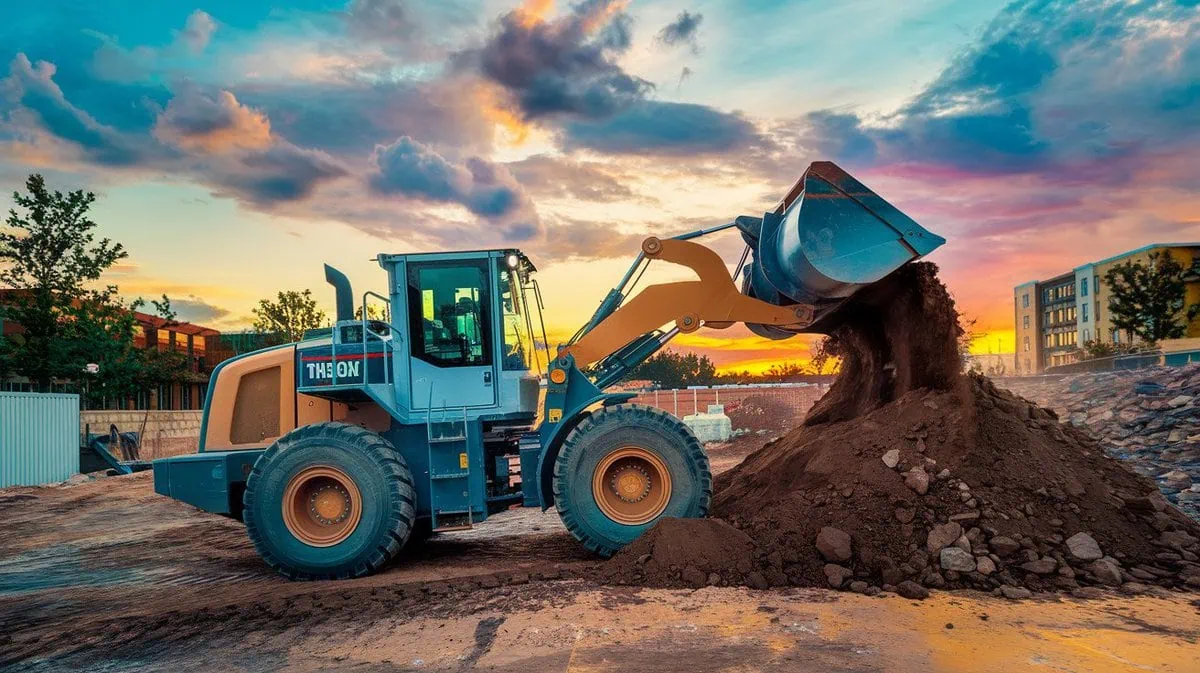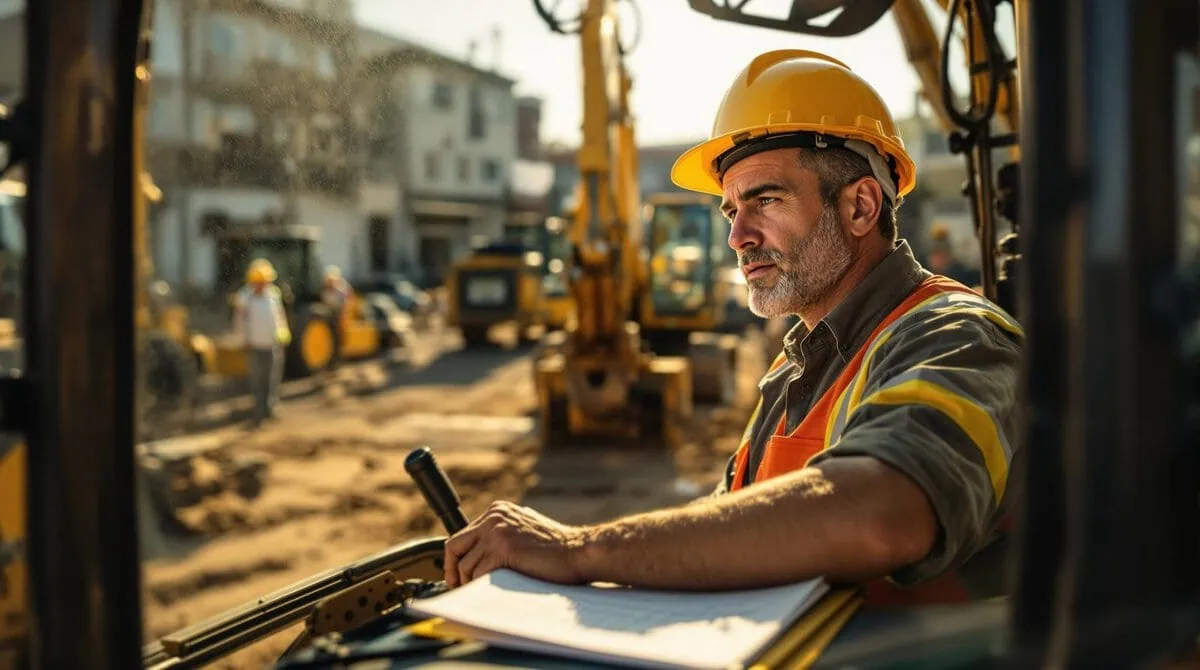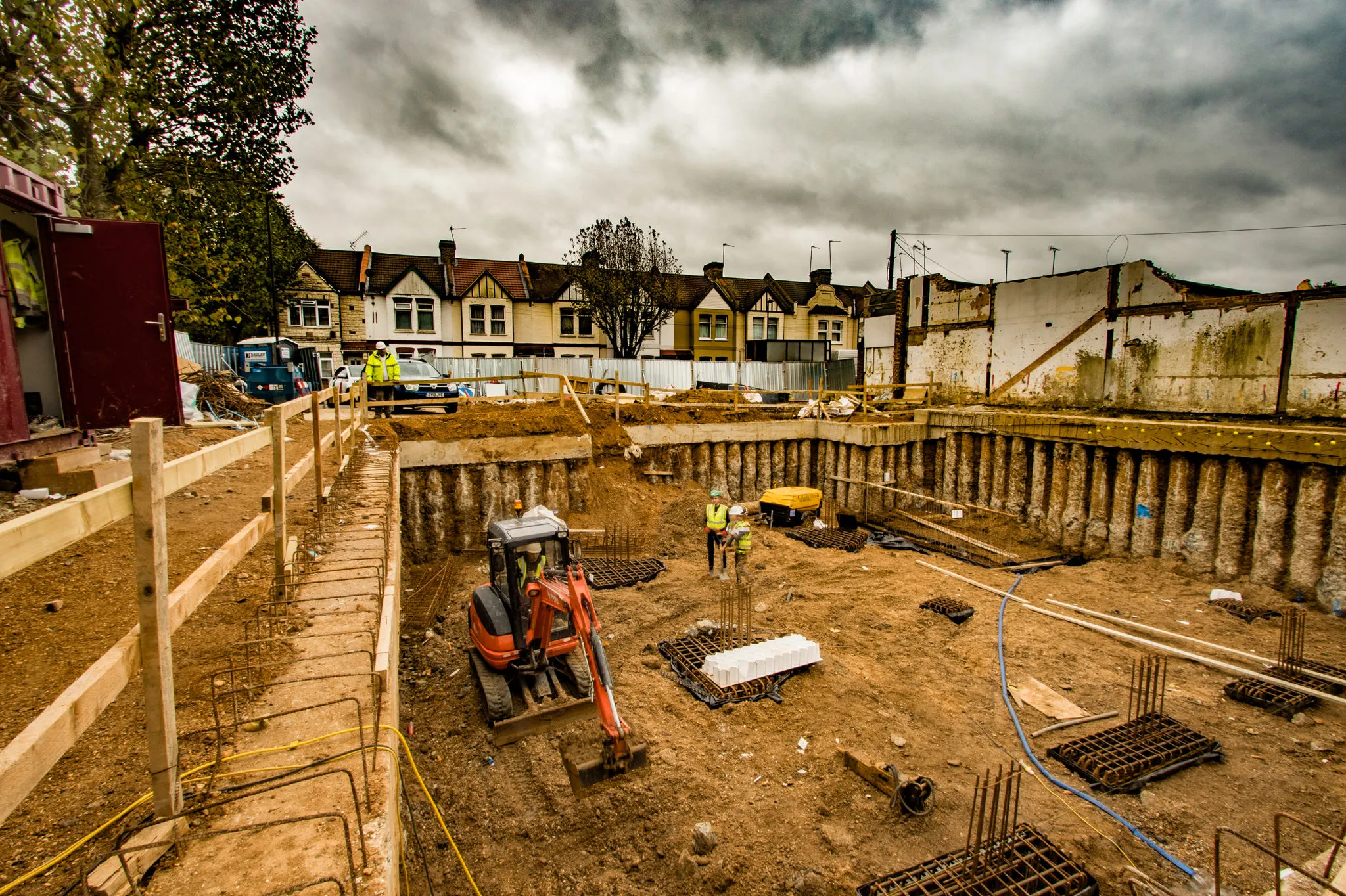Demolition projects require the right equipment to ensure efficiency, safety and cost-effectiveness. Whether you are dealing with small residential projects or large industrial demolitions, selecting the appropriate demolition machinery is crucial to achieving your goals. Without the right machinery, projects can face delays, cost overruns and safety hazards.
Choosing the right demolition machineryinvolves understanding project requirements, machinery types and safety measures. By selecting equipment like excavators, bulldozers and crushers, you can enhance efficiency and minimize risks.
Let’s explore the types of demolition machinery, their applications and how to choose the right one for your project.
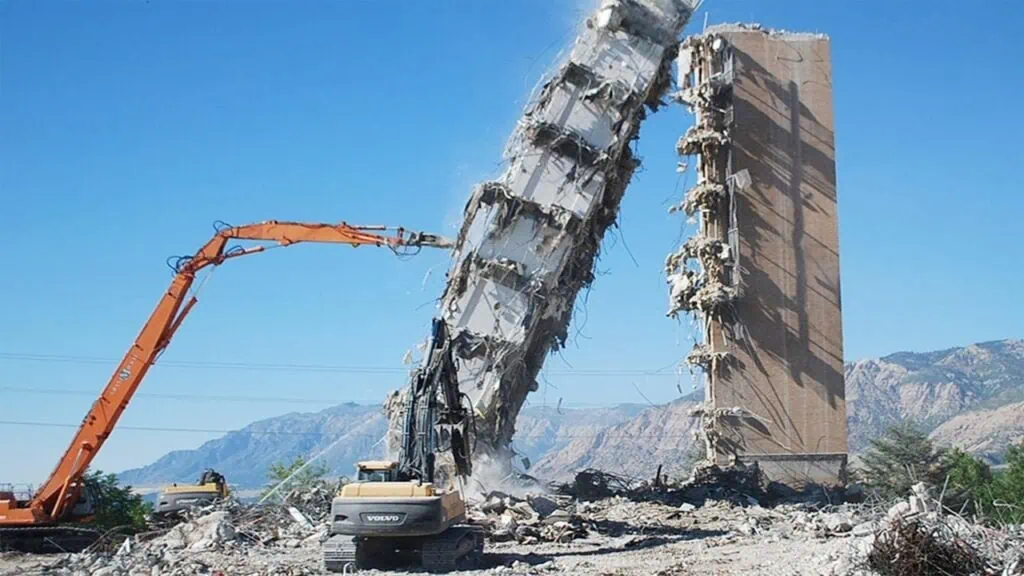
What is demolition machineryand Its Applications?
Demolition machineryrefers to a range of specialized equipment used to dismantle buildings, roads, and infrastructure. These machines vary in size and complexity, from smaller handheld tools like pneumatic hammers to large, powerful equipment such as hydraulic excavators, high-reach demolition machines, and wrecking balls. demolition machineryis critical for efficiently and safely executing demolition tasks in urban redevelopment, infrastructure projects, and large-scale demolition operations, providing the power and precision needed for these challenging tasks.
demolition machineryplays a key role in ensuring safe and efficient dismantling of buildings, roads, and construction sites. These machines are indispensable for quick project completion, whether it’s tearing down old buildings or preparing land for new developments, making construction processes more efficient.
- Building Demolition: Machines like high-reach excavators and wrecking balls are used to tear down structures safely while minimizing damage to surrounding areas.
- Road and Bridge Demolition: Hydraulic shears, crushers, and other tools dismantle concrete and steel in infrastructure projects, allowing for the quick removal of old roads and bridges.
- Site Clearance: Bulldozers and loaders clear debris from construction sites, making the land ready for new developments.
- Recycling and Waste Management: Crushers, shredders, and other equipment help recycle materials from demolished structures, reducing waste and supporting environmentally sustainable practices.
Types of Demolition Machinesand Their Applications
Selecting the right demolition machineryis crucial to ensuring efficiency, safety and cost-effectiveness in your demolition projects. Each type of machinery is designed for specific tasks, ranging from precise deconstruction to large-scale structure removal.
demolition machineryincludes excavators, bulldozers, wrecking balls, crushers and high-reach demolition machines. These machines serve various applications such as building demolition, site clearance and material recycling, offering distinct advantages for each task.
1. Demolition Excavator
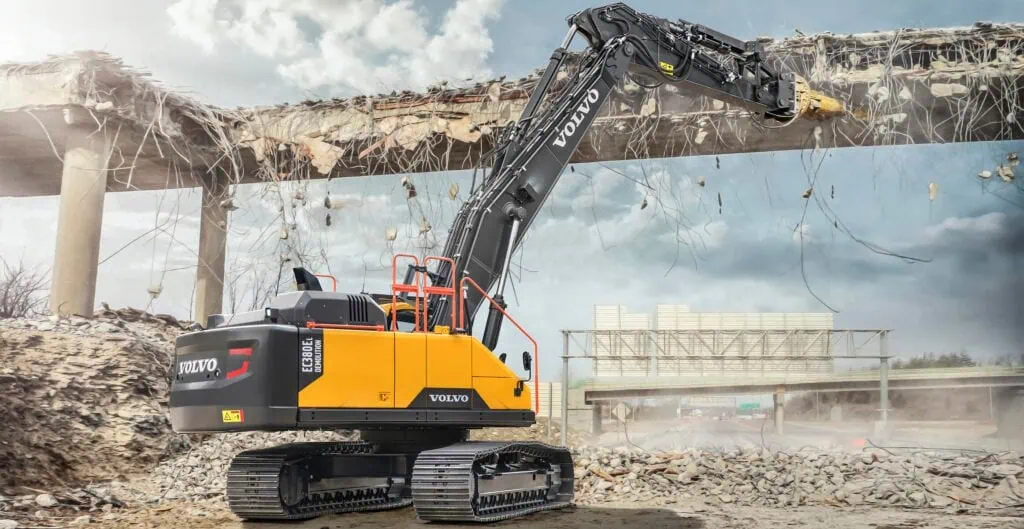
Escavadeiras are the most commonly used demolition machinery, offering flexibility and precision for various demolition tasks. They are equipped with hydraulic arms and attachments that allow them to perform diverse operations such as breaking, cutting and lifting heavy materials. Excavators are available in different types, including standard, long-reach and mini-excavators, each catering to specific project needs.
Advantages:
- Versatility: Can be fitted with multiple attachments, such as hydraulic breakers, shears, grapples and pulverizers, enabling it to handle different demolition tasks efficiently.
- Precision: Provides excellent control for selective demolition tasks, allowing targeted removal without damaging surrounding structures.
- Mobility: Tracks provide stability and mobility even on rough or uneven terrain, making them suitable for various environments.
- Efficiency: Powerful hydraulic systems ensure quick and efficient operations, minimizing project timelines.
Applications:
- Urban Demolition: Used to dismantle residential and commercial buildings with precision in tight spaces.
- Road and Bridge Demolition: Excavators equipped with breakers can efficiently break down concrete structures.
- Foundation Removal: Excavators are used to remove deep foundations and underground structures.
- Material Sorting: With grapples and buckets, they can sort and load debris for recycling purposes.
2. Bulldozers
Bulldozers are powerful earthmoving machines equipped with wide, heavy blades in the front, designed to push large quantities of debris and materials. They play an essential role in clearing and leveling demolition sites, ensuring a clean working area for further operations.
Advantages:
- High Power: Bulldozers can move large debris efficiently, making them ideal for clearing demolition sites quickly.
- Durability: Built with robust materials to withstand harsh demolition conditions.
- Operational Efficiency: Reduces manual labor and accelerates site preparation processes.
- Versatility: Available in tracked and wheeled models for various terrains.
Applications:
- Site Clearing: Removing rubble and debris after demolition to prepare for new construction.
- Land Leveling: Grading the land post-demolition to create a level base for future development.
- Heavy Debris Pushing: Bulldozers are used to push large steel beams, concrete blocks and other heavy materials.
- Industrial Demolition: Clearing large industrial sites efficiently with minimal downtime.
3. Wrecking Balls
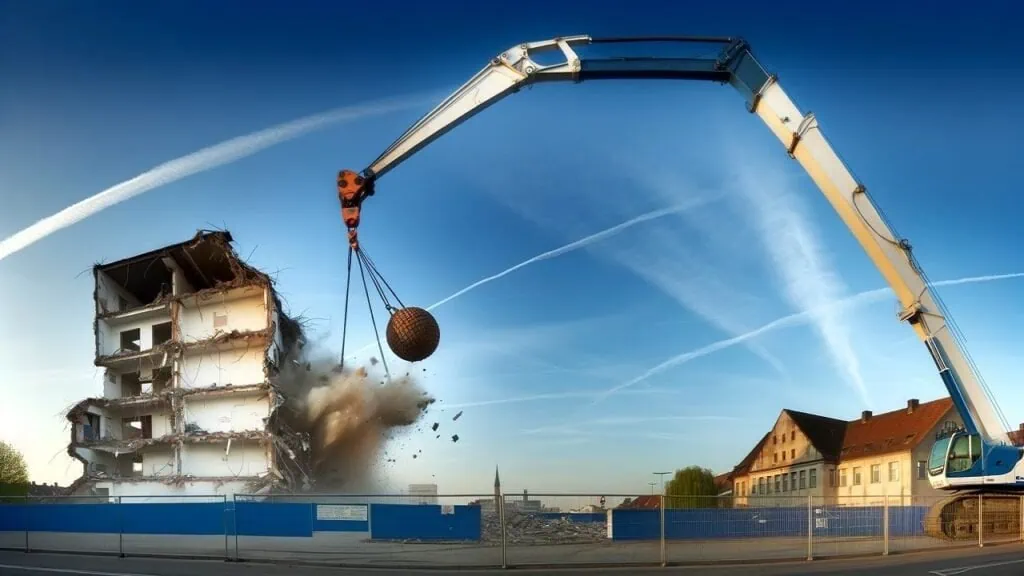
Wrecking balls are a traditional and highly effective method of demolishing large concrete and brick structures. This type of demolition machineryinvolves swinging a heavy steel ball from a crane to break down structures through sheer impact force.
Advantages:
- Cost-Effective: A relatively low-cost option for demolishing large structures compared to modern alternatives.
- High Impact Force: Suitable for demolishing thick concrete and masonry walls efficiently.
- Simple Operation: Requires minimal technological expertise to operate.
- Wide Coverage: Can cover large areas in a single swing, speeding up the demolition process.
Applications:
- Building Demolition: Used primarily for demolishing old factories, warehouses and other large structures.
- Structural Collapse: Bringing down unstable buildings to avoid safety hazards.
- Chimney and Tower Demolition: Breaking down tall structures safely.
- Large-Scale Demolition Projects: Ideal for high-volume demolition in open areas.
4. Crushers
Crushers are specialized machines designed to break down concrete, asphalt and brick materials into smaller, manageable pieces. These materials can be recycled and reused in future construction projects, making crushers an essential component of eco-friendly demolition processes.
Advantages:
- Material Recycling: Allows the reuse of materials, reducing waste and lowering environmental impact.
- Cost Savings: Cuts down on disposal costs by turning debris into reusable construction materials.
- Multiple Crushing Options: Available in jaw, impact and cone crushers to handle different material types.
- Portability: Some models are mobile, allowing on-site crushing and processing.
Applications:
- Concrete Recycling: Crushing old concrete slabs into reusable aggregates.
- Road Demolition: Processing asphalt and concrete from road demolitions.
- Brick Processing: Breaking down brick structures for reuse in landscaping or new construction.
- Industrial Waste Management: Handling byproducts from industrial demolition.
5. High-Reach Demolition Machines

High-reach demolition machines are specifically designed for the controlled dismantling of tall structures such as skyscrapers and bridges. These machines feature long arms with attachments that can safely remove sections of a building from top to bottom.
Advantages:
- Increased Safety: Reduces the need for manual labor in hazardous environments.
- Precision: Allows selective demolition of specific building sections.
- Reduced Dust and Vibration: Minimizes impact on surrounding areas.
- Extended Reach: Can reach heights that traditional machinery cannot access.
Applications:
- Skyscraper Demolition: Carefully dismantling high-rise buildings in urban environments.
- Bridge Deconstruction: Removing bridge sections in controlled sequences.
- Chimney Removal: Safely taking down industrial chimneys.
- Selective Demolition: Targeting specific sections of a building while preserving others.
Choosing the right demolition machineryfor your project ensures efficiency, safety and cost control. Understanding the applications and advantages of excavators, bulldozers, wrecking balls, crushers and high-reach machines can help you make informed decisions for your demolition needs.
How to Choose the Right Demolition Machinery?
Selecting the right demolition machineryrequires careful planning and evaluation of multiple factors to ensure efficiency, safety and cost-effectiveness in your project. The right choice can improve operational timelines, reduce costs and minimize environmental impact.
To choose the right demolition machinery, consider factors such as project scale, material type, budget, environmental impact and safety requirements. Evaluating machine capabilities, operational needs and potential challenges will help you select the most suitable equipment.
Project Size and Scope
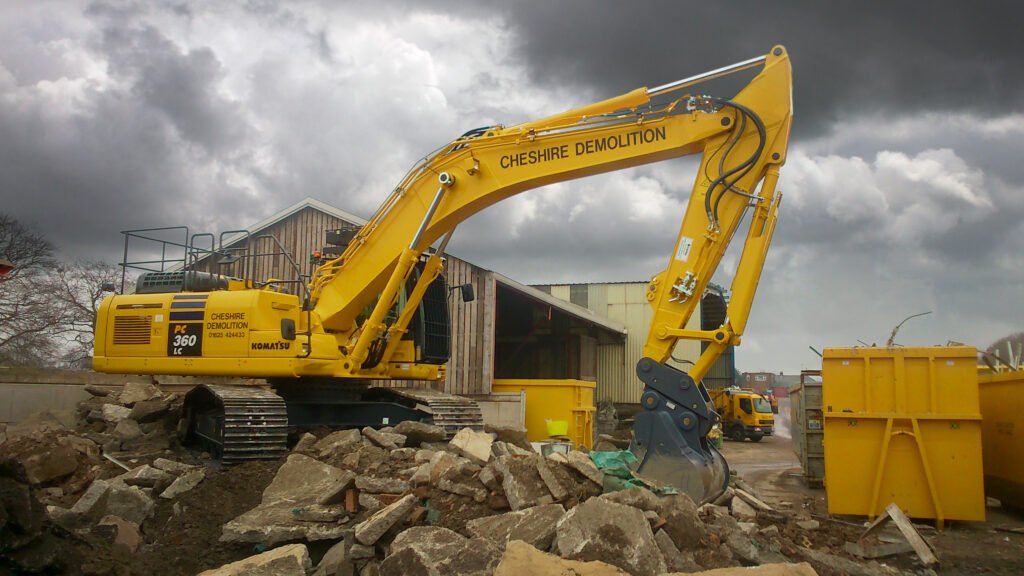
The scale of your demolition project plays a vital role in choosing the right machinery. Key considerations include:
- Small-Scale Projects: Mini excavators and skid-steer loaders are ideal for demolishing small residential structures and interior demolitions. They offer excellent maneuverability and cause minimal disruption to surrounding areas.
- Medium-Scale Projects: For commercial buildings, mid-sized excavators and bulldozers provide a balance of power and flexibility to manage debris efficiently.
- Large-Scale Demolition: High-reach excavators and wrecking balls are suited for large industrial facilities, skyscrapers and extensive infrastructure demolition projects. These machines ensure controlled dismantling of tall structures with minimal safety risks.
Material Type
Different demolition machinery is designed to handle specific materials effectively. Understanding the material type helps in selecting the right equipment:
- Concrete Demolition: Crushers and pulverizers break down concrete into reusable aggregates, making them ideal for road and foundation demolition.
- Steel Structures: Hydraulic shears and cutting torches efficiently cut through steel frameworks, pipes and reinforced structures.
- Wood and Brick Buildings: Multi-purpose attachments such as grapples and hammers are well-suited for handling lighter materials without excessive damage.
- Mixed-Use Materials: When dealing with mixed materials, versatile demolition excavators with interchangeable attachments offer an all-in-one solution.
Budget Considerations
Balancing your budget while ensuring efficient operations is critical when selecting demolition machinery. Consider the following financial aspects:
- Equipment Purchase vs. Rental: Purchasing may be suitable for long-term projects, whereas renting is a cost-effective option for short-term needs.
- Operating Costs: Factor in fuel consumption, maintenance and labor costs to determine the most cost-efficient machinery.
- Productivity vs. Cost: Investing in higher-capacity machinery can lead to long-term savings by reducing project timelines.
- Resale Value: Some demolition equipment retains high resale value, making them a worthwhile investment for contractors.
Environmental Considerations
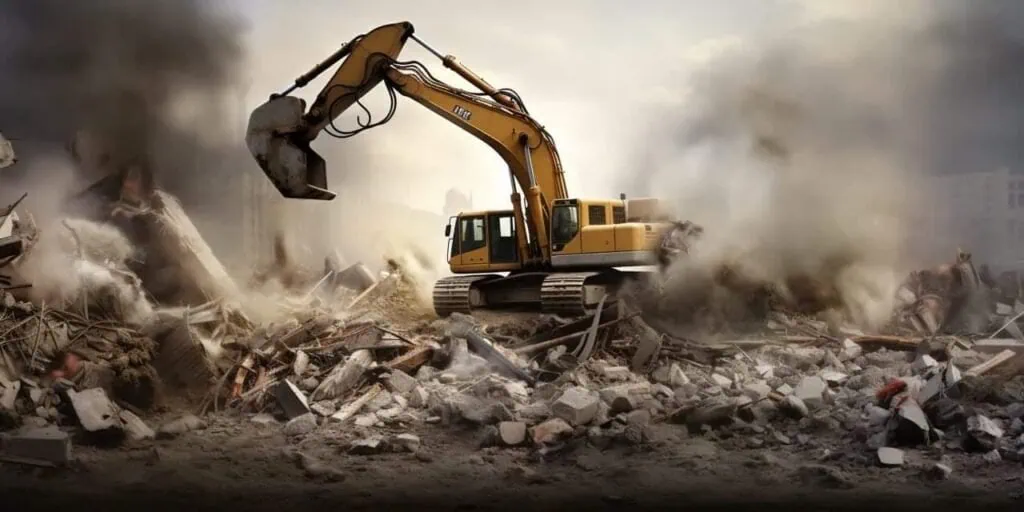
Modern demolition projects must comply with environmental regulations to minimize pollution and waste. Key considerations include:
- Noise and Dust Control: Choose equipment with built-in suppression systems to reduce dust and noise levels, ensuring compliance with urban demolition requirements.
- Fuel Efficiency: Opt for machinery with lower fuel consumption and emissions to reduce carbon footprints.
- Waste Management: Select machines that facilitate efficient debris sorting and recycling to minimize landfill contributions.
- Eco-Friendly Attachments: Some hydraulic attachments are designed to optimize energy consumption and minimize waste generation.
Safety and Operational Training
Ensuring worker safety is paramount when using demolition machinery. Some essential factors to consider include:
- Operator Certification: Ensure operators are trained and certified to handle heavy demolition equipment safely.
- Machine Stability: Equipment with stability control and advanced monitoring systems can prevent accidents during operations.
- Personal Protective Equipment (PPE): Demolition projects require workers to use proper PPE, including helmets, gloves and safety harnesses.
- Emergency Protocols: Familiarize your team with emergency shutdown procedures and hazard response plans to prevent injuries.
Site Accessibility and Space Constraints
The physical characteristics of your demolition site will influence the machinery selection:
- Confined Spaces: Compact and mini excavators are perfect for tight spaces with restricted access.
- Urban Areas: Noise-reduction and low-emission machinery are ideal for densely populated environments.
- Open Spaces: Large machinery such as bulldozers and high-reach excavators are more efficient in wide, open demolition sites.
Technological Advancements in demolition machinery
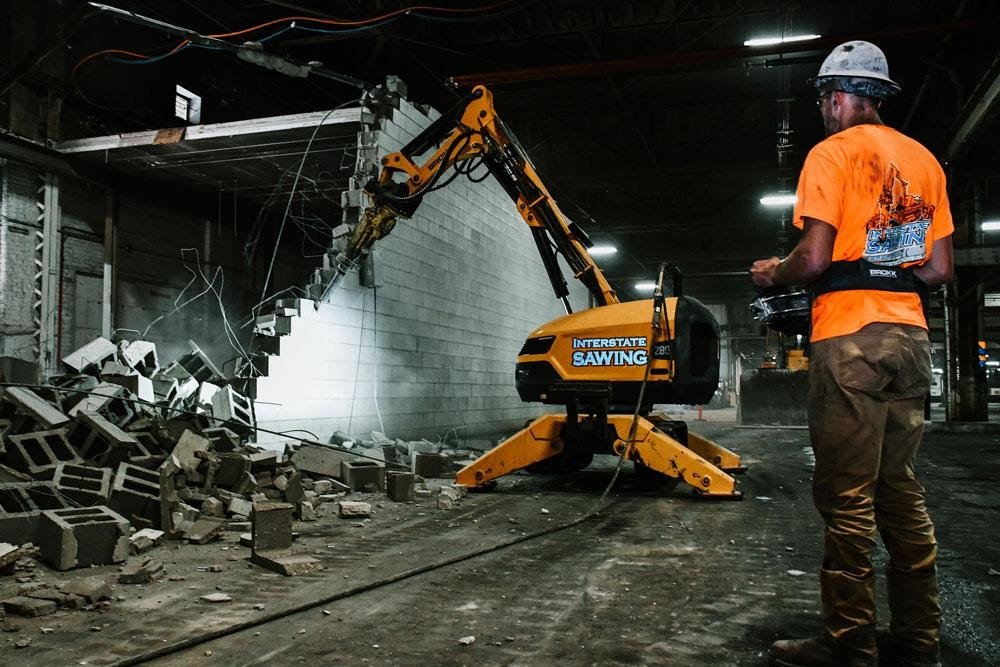
Incorporating modern technology can enhance project efficiency and precision:
- Remote-Controlled Machines: Allow operators to perform demolition from a safe distance, reducing risk exposure.
- GPS and Telematics: Enable tracking and monitoring of machine performance to optimize operations.
- Automated Attachments: Improve efficiency by quickly switching between demolition tools without manual intervention.
- Sensor-Based Safety Systems: Provide real-time hazard detection to prevent equipment malfunctions and accidents.
Choosing the right demolition machineryrequires a thorough understanding of your project requirements, material characteristics and environmental factors. By carefully considering project scale, budget and safety measures, you can ensure efficient and safe demolition operations tailored to your specific needs.
Common Mistakes to Avoid in Demolition MachinerySelection
Avoiding common mistakes when choosing demolition machinerycan save costs and prevent project delays, ensuring a smooth and efficient demolition process. Understanding potential pitfalls helps in making informed decisions that align with your project goals.
Common mistakes when selecting demolition machineryinclude underestimating project needs, ignoring safety standards, selecting the wrong equipment size and overlooking maintenance requirements. Proper planning and informed choices are essential for efficient operations.

Underestimating Project Requirements
One of the most common mistakes is failing to accurately assess project demands. Key issues include:
- Choosing Undersized Equipment: Using smaller machinery for large-scale projects results in inefficiencies, extended timelines and higher operational costs.
- Ignoring Project Complexity: Some demolition projects require specialized machinery, such as high-reach excavators for tall structures or concrete crushers for reinforced materials.
- Overlooking Site Conditions: Tight spaces or difficult terrain may necessitate specialized machinery with greater maneuverability and flexibility.
Ignoring Safety Standards
Prioritizing safety is crucial in demolition operations. Common safety-related mistakes include:
- Lack of Operator Training: Untrained personnel operating heavy machinery increases the risk of accidents and injuries.
- Ignoring Safety Features: Modern demolition machinery includes essential safety features like stability controls and dust suppression systems that should not be overlooked.
- Inadequate Site Preparation: Failing to secure the demolition area or remove hazardous materials can pose significant risks to workers and the surrounding environment.
- Neglecting Regulatory Compliance: Adhering to local safety regulations and standards prevents legal liabilities and ensures a safe working environment.
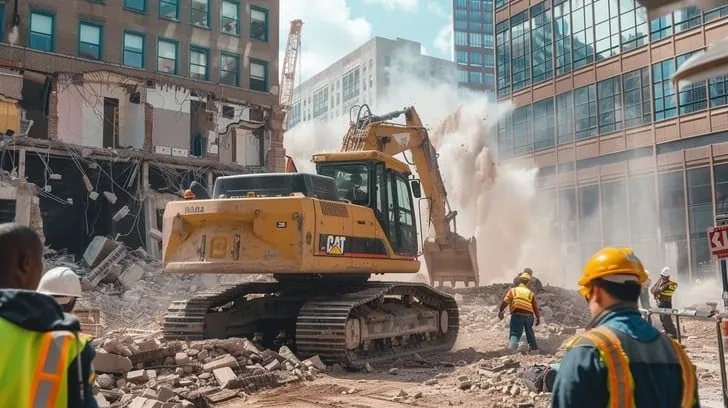
Selecting the Wrong Equipment Size
Choosing the wrong size of demolition machinerycan lead to inefficiencies and increased costs. Mistakes to avoid include:
- Oversized Equipment for Small Jobs: Large machinery in confined spaces can cause operational difficulties and damage to nearby structures.
- Underpowered Machinery for Tough Materials: Insufficient power leads to prolonged demolition times and higher fuel consumption.
- Ignoring Attachments Compatibility: Ensuring the machinery can accommodate the right attachments for the job is critical for efficiency.
Overlooking Maintenance Needs
Regular maintenance is vital for keeping demolition machineryin optimal condition. Common mistakes include:
- Skipping Routine Inspections: Failure to conduct regular equipment checks can lead to unexpected breakdowns and costly repairs.
- Ignoring Wear and Tear: Demolition equipment faces extreme conditions; monitoring parts such as hydraulic systems and wear plates is essential.
- Not Following Manufacturer Guidelines: Adhering to the recommended maintenance schedules ensures machinery longevity and performance.
- Delaying Repairs: Small mechanical issues, if neglected, can escalate into significant operational failures.
Focusing Only on Initial Costs
Many buyers make the mistake of choosing equipment based solely on upfront costs without considering long-term expenses. Important considerations include:
- Fuel Efficiency: Investing in fuel-efficient machinery can significantly reduce operating costs over time.
- Resale Value: Machines with higher resale value provide better ROI when it’s time to upgrade.
- Total Cost of Ownership: Beyond the purchase price, consider expenses such as insurance, transportation and spare parts availability.
Not Consulting Experts
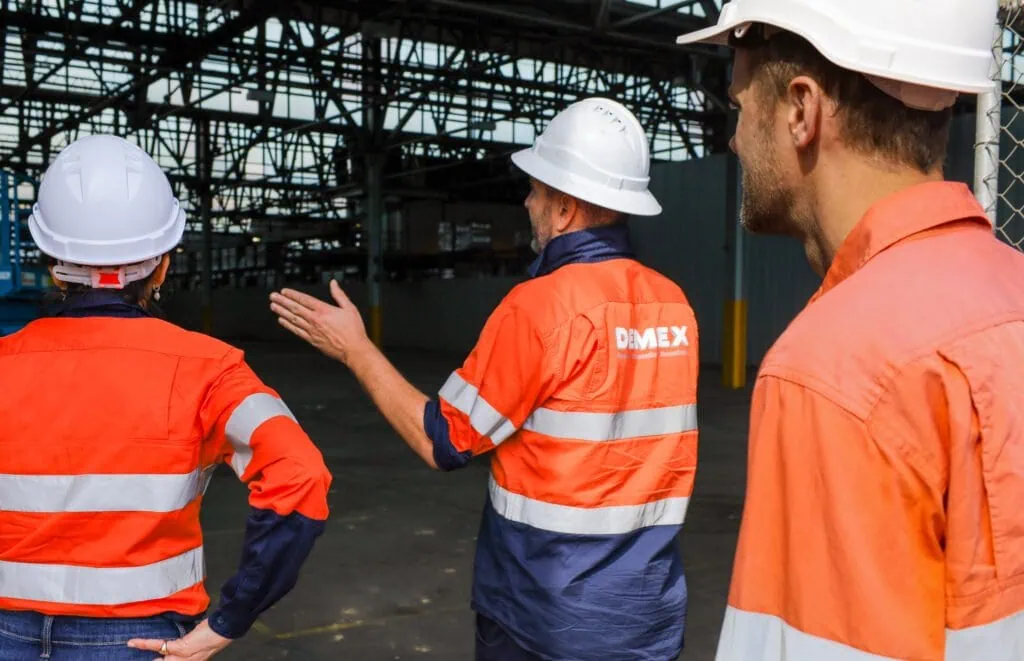
Professional advice can prevent costly mistakes when selecting demolition machinery. Common errors include:
- Over-relying on Internal Knowledge: Consulting industry experts or suppliers can provide valuable insights into the best machinery options.
- Ignoring Equipment Demonstrations: Testing machinery before purchase ensures it meets performance expectations.
- Failing to Seek Multiple Quotes: Comparing different suppliers helps in getting the best deal and identifying potential cost-saving opportunities.
Neglecting Environmental Considerations
Environmental factors play a crucial role in modern demolition projects. Avoid these mistakes:
- Disregarding Noise Pollution: Selecting machinery with noise suppression features can help comply with urban demolition regulations.
- Overlooking Waste Management: Proper debris sorting and recycling equipment can reduce environmental impact and disposal costs.
- Failing to Use Eco-Friendly Equipment: Opting for low-emission machinery contributes to sustainability and regulatory compliance.
Avoiding these common mistakes when selecting demolition machineryensures smoother project execution, cost savings and improved safety. Proper planning, adherence to safety protocols and thorough equipment evaluation will help you choose the right machinery for your specific demolition needs.
Summary
Choosing the right demolition machineryis critical to ensuring efficient, safe and cost-effective project completion. Consider factors such as project scope, material type, budget and environmental impact when selecting equipment.

